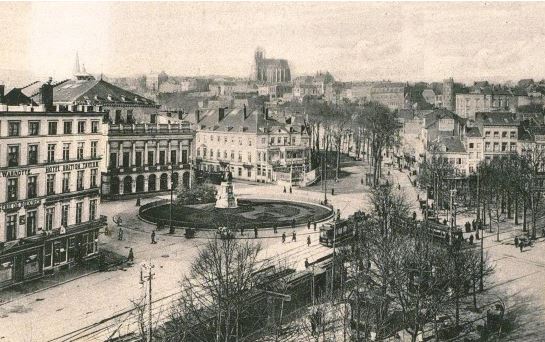Liège (Lidje, Luik, Lüttich) is a major city and a municipality in Belgium. It is the main city of the province of the same name, Liège, in Belgium’s francophone region of Wallonia.
The city is situated in the valley of the Meuse River, in the east of Belgium, not far from borders with the Netherlands (Maastricht is about 33 km (20.5 mi) to the north) and with Germany (Aachen is about 53 km (32.9 mi) north-east). At Liège the Meuse river meets the river Ourthe. The city is part of the sillon industriel, the former industrial backbone of Wallonia. It still is the principal economic and cultural centre of the region.
The Duke of Marlborough captured the city from the Bavarian prince-bishop and his French allies in 1704 during the War of the Spanish Succession.
In the middle of the eighteenth century the ideas of the French Encyclopédistes began to gain popularity in the region. Bishop de Velbruck (1772–84), encouraged their propagation, thus prepared the way for the Liège Revolution which started in the episcopal city on 18 August 1789 and led to the creation of the Republic of Liège before it was invaded by counter-revolutionary forces of the Habsburg Monarchy in 1791.
In the course of the 1794 campaigns of the French Revolution, the French army took the city and imposed strongly anticlerical regime, destroying St. Lambert’s Cathedral. The overthrow of the prince-bishopric was confirmed in 1801 by the Concordat co-signed by Napoléon Bonaparte and Pope Pius VII. France lost the city in 1815 when the Congress of Vienna awarded it to the United Kingdom of the Netherlands.
Dutch rule lasted only until 1830, when the Belgian Revolution led to the establishment of an independent, Catholic and neutral Belgium which incorporated Liège. After this, Liège developed rapidly into a major industrial city which became one of continental Europe’s first large-scale steel making centres. The Walloon Jacquerie of 1886 saw a large-scale working class revolt. No less than 6,000 regular troops were called into the city to quell the unrest, while strike spread through the whole sillon industriel.
Liège’s fortifications were redesigned by Henri Alexis Brialmont in the 1880s and a chain of twelve forts was constructed around the city to provide defence in depth. This presented a major obstacle to Germany’s army in 1914, whose Schlieffen Plan relied on being able to quickly pass through the Meuse valley and the Ardennes en route to France.

